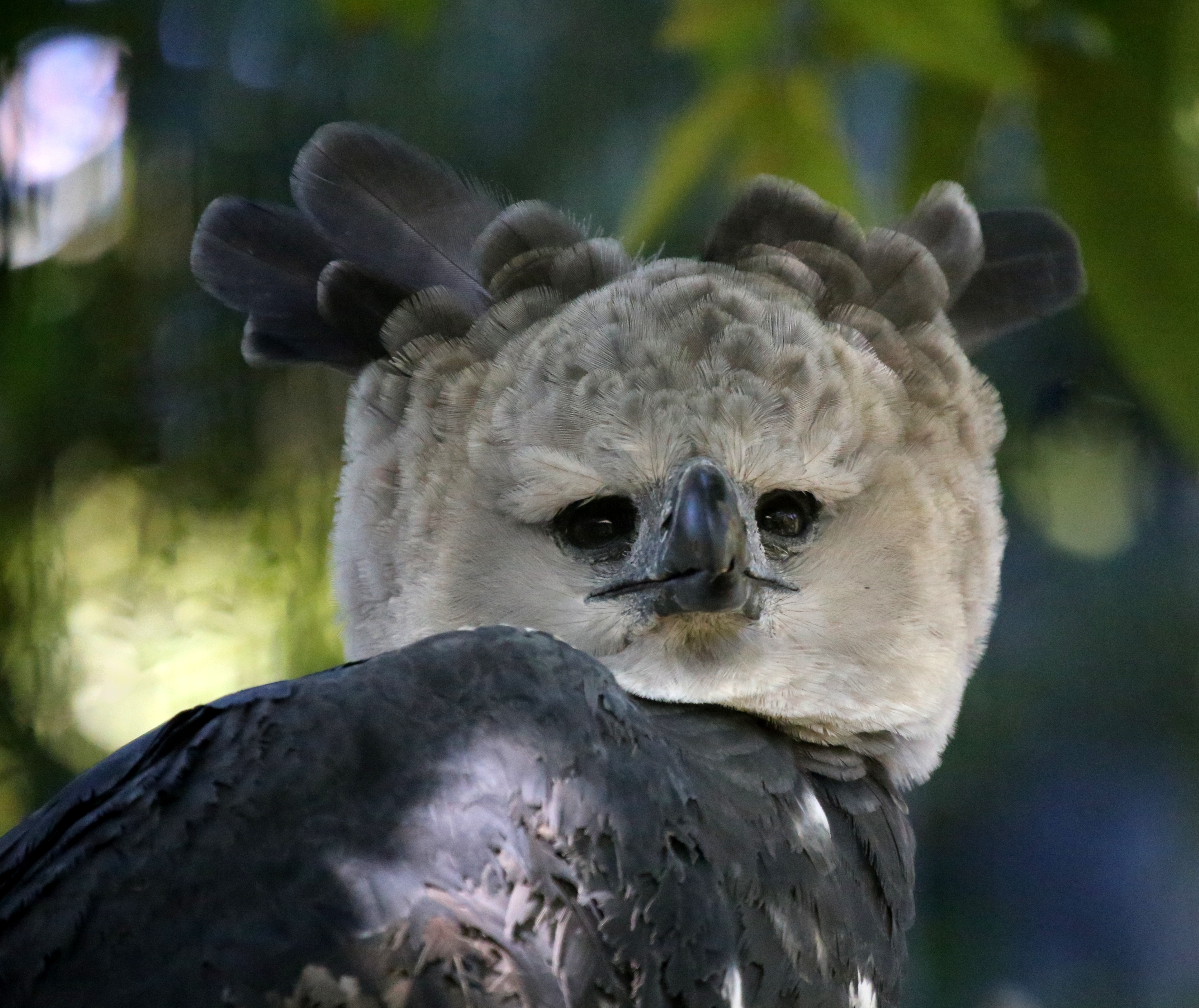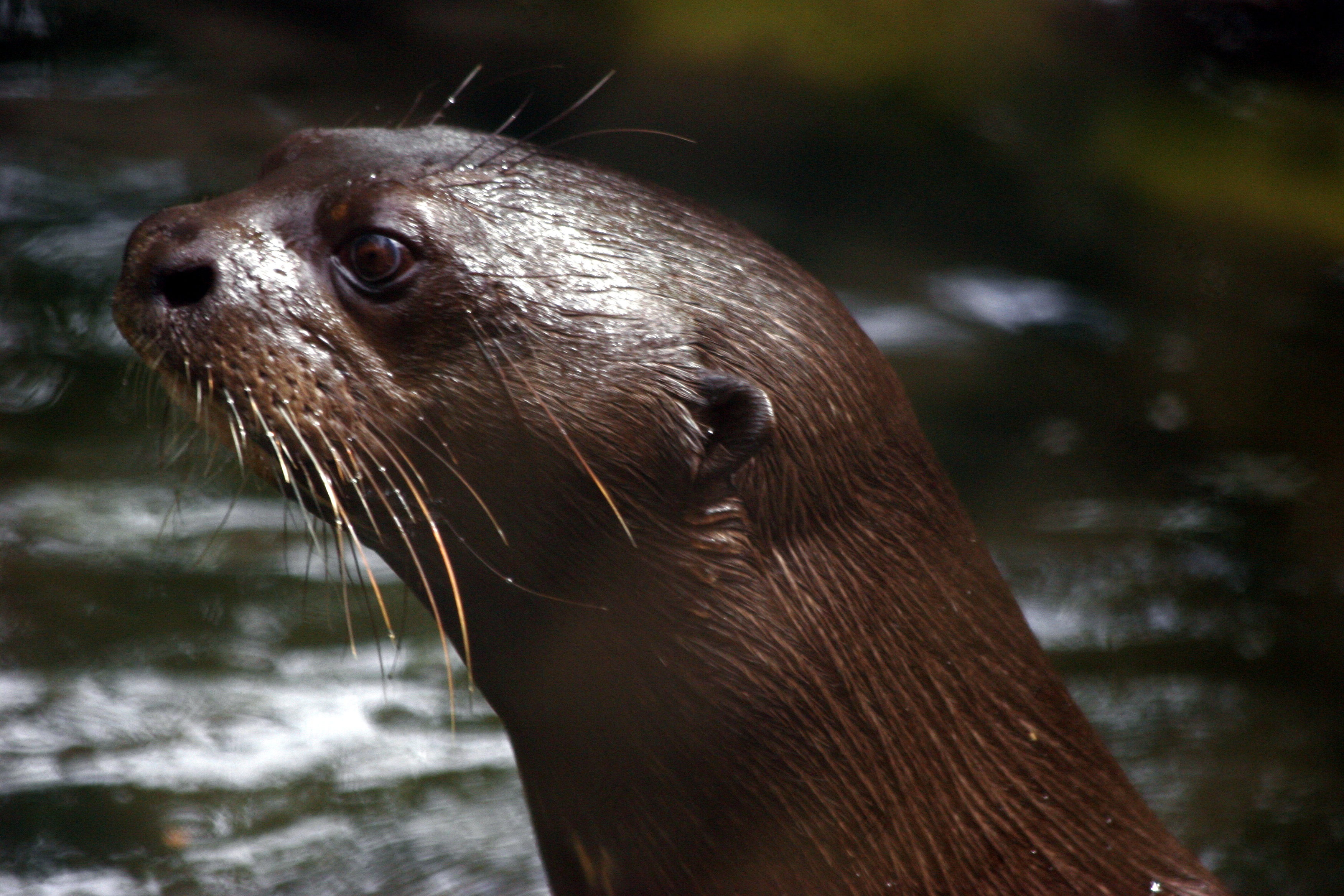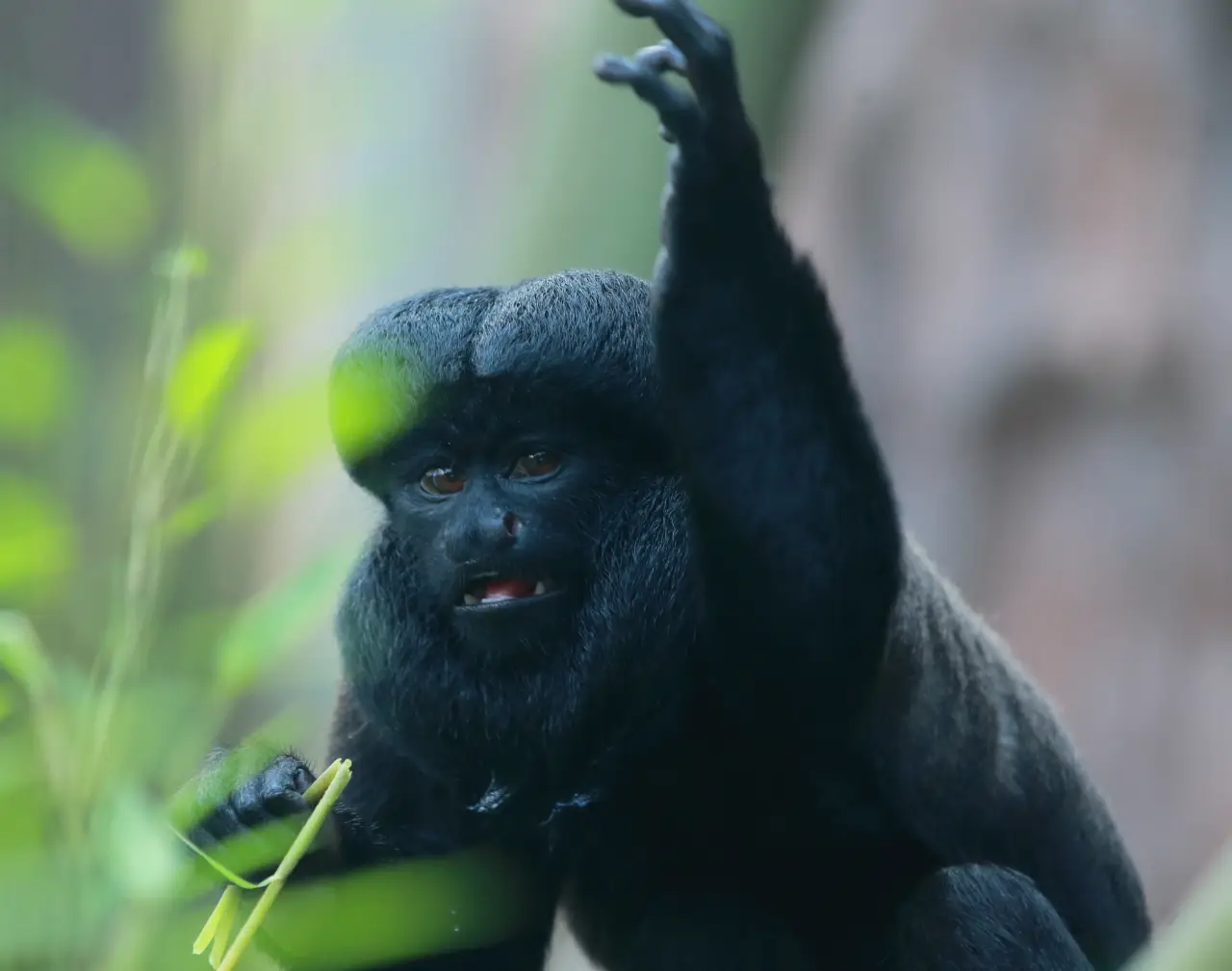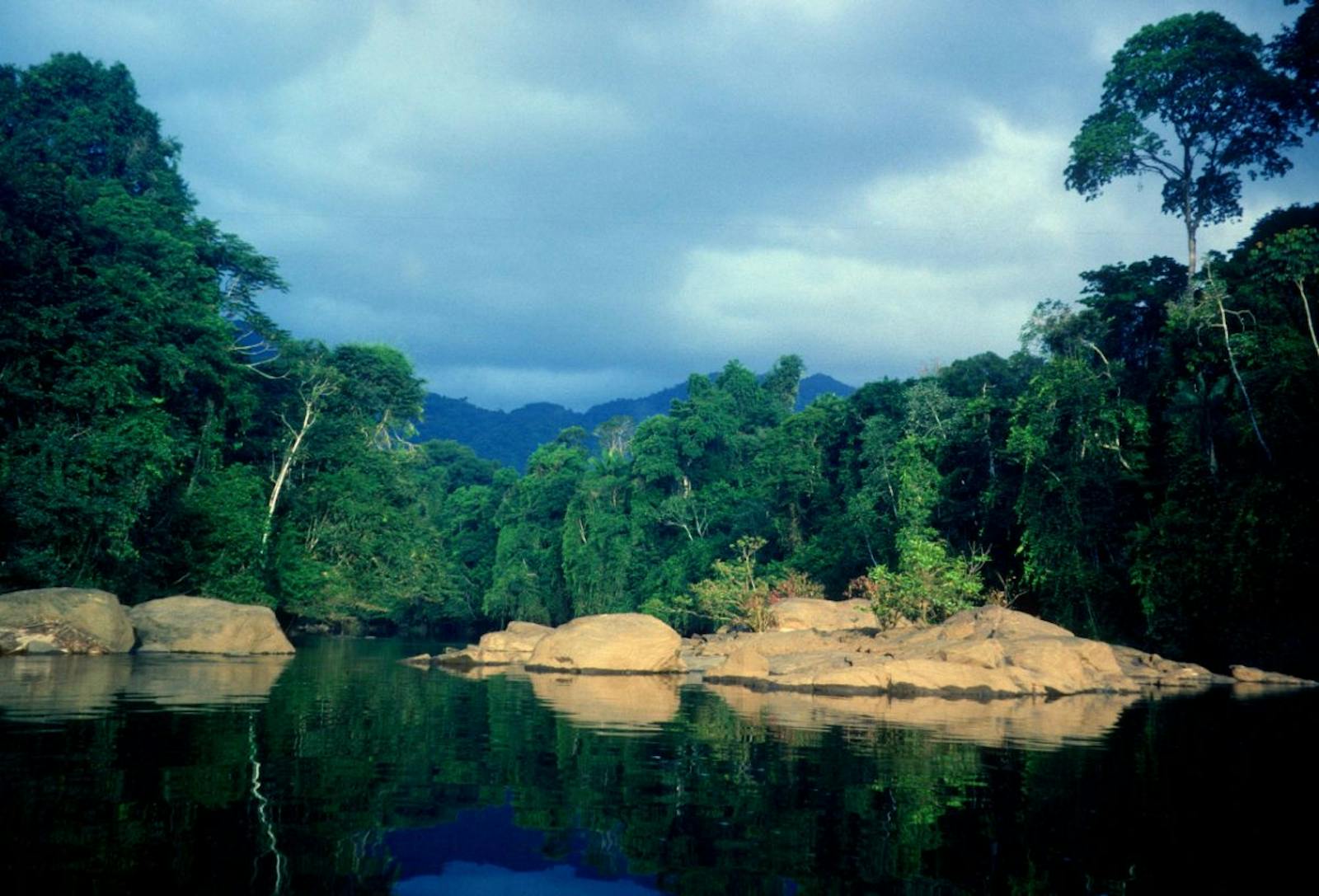Guianan Piedmont Moist Forests
The ecoregion’s land area is provided in units of 1,000 hectares. The conservation target is the Global Safety Net (GSN1) area for the given ecoregion. The protection level indicates the percentage of the GSN goal that is currently protected on a scale of 0-10. N/A means data is not available at this time.
Bioregion: Guianan Forests & Savanna (NT21)
Realm: Southern America
Ecoregion Size (1000 ha):
23,136
Ecoregion ID:
466
Conservation Target:
96%
Protection Level:
8
States: Venezuela, Brazil, Guyana, Colombia
Fernandez's sword-nosed bats are known not only for their sharp pointy noses but are unique in occurring only in transitional savanna-forest ecosystems of the Guianan piedmont moist forest in southern Venezuela.
These fluffy brown bats also have large ears, which together with the large nose make them excellent echolocators (using sound to “see” their prey). This unique feature allows them to catch beetles and moths in the air, which they do abundantly and nightly.
These sword-nosed bats are agile aerial hunters making them valuable and natural “pest control” for humans. Small colonies of these bats will live in caves with other species, or on their own in small colonies.
The Guianan piedmont moist forest is a transitional ecoregion between the mountainous Pantepui forests and shrublands and Guianan highland moist forest and surrounding dry forests (Llanos) to the north and rain forests (Amazon Basin) to the south. Not only is there a strong north (dry) to south (wet) transition, but the gigantic tepui massifs that span the ecoregion also create their own weather and microclimates.

The flagship species of the Guianan Piedmont Moist Forests ecoregion is the harpy eagle. Image credit: Creative Commons
Politically the ecoregion spans southern Venezuela, northernmost Brazil, and a small portion of western Guyana. These piedmont forests are part of a complex geological and ecological region known as the Guianan Shield, which consists of numerous granitic outcrops which occur as an archipelago of “sky islands” across northern South America.
The surrounding ecoregions contribute to the complexity of biodiversity found in these piedmont foothill forests the soils tend to reflect the granitic origins and are generally sandy and poor in nutrients.
The climate averages 24°C and is humid with 2,000–2,600 mm of rainfall throughout the year. Plant endemism and richness are high, and of the estimated 8000 species of vascular plants—50% may be endemic to the greater Guiana Shield.
In this area, palm diversity is notably high and includes such species as Astrocaryum mumbaca, A. munbaca, Bactris sphaerocarpa (not in Suriname), Maximiliana maripa, and Iriartea excrrhiza.

Giant otter. Image credit: David Monniaux, Creative Commons
This ecoregion retains high levels of biodiversity, owing both to the complexity of habitats found within and around it and to its relative intactness. There are over 200 mammals found here, including aquatic species like Giant river otters, Giant anteaters, and terrestrial species like the Giant armadillo.
These piedmont forests surround the high tepui formations, which were also thought to be the land of giants as early explorers dubbed it the “Lost World” and imagined dinosaurs to still exist. Endangered mammals include black-bearded saki, Fernandez's sword-nosed bat, and giant otter.
One mammal that is restricted to this and surrounding ecoregions (semi-endemic) is the Guianan squirrel. Birds species are equally diverse with over 600 species, including the charismatic Guianan cock-of-the-rock (Rupicola rupicola). Other birds include the grey-winged trumpeter, harpy eagle, Orinoco goose, Brazilian teal, and horned screamer.
%20Almir%20Candido%20de%20Almeida.webp)
Guianan cock-of-the-rock. Image credit: Almir Almeida, Creative Commons
As with other groups, reptiles and amphibians are poorly known to science as much of the ecoregion has not been explored. In the southern part of the ecoregions, caiman and river turtles are commonly seen along the riverbanks.
This ecoregion remains one of the most inaccessible and thus intact ecoregions in northern South America, and also contains many Indigenous groups who have lived in these forests for centuries (including the Yanomami tribe). Protected areas include the Jaua-Sarisarinama National Park, El Caura Forest Reserve, Estación Biológica El Frío, Imataca Forest Reserve, Maracá Ecological Reserve, and Canaima National Park.
Although this remains one of the most intact ecoregions in the Neotropics, the presence of humans can be felt from the savannas in the north to the rainforests in the south, as outside pressures find their way in. Small scale mining and road networks act as “colonial” forces allowing humans to penetrate further into the primary forest each year.

Black bearded saki
Although many large protected areas are in place both for biodiversity and for indigenous peoples, the long-term future seems to be following in the tracks of much of the rest of the Amazon basin.
Community-based management is gaining importance in furthering the capacity and mission of the federal and state environmental agencies. However, the alarming rate of burning, deforestation and road-building in the Amazon Basin leaves the future in question.
The priority conservation actions for the next decade will be to 1) provide financial incentive to retain existing forest outside and between protected areas; 2) provide a long term financial and management solution to the region protected areas network; and 3) regulate local consumption of native species except where managed.
Citations
- WWF. Northern South America: Guyana, Suriname, French Guiana, northern Brazil, and eastern Venezuela. https://www.worldwildlife.org/ecoregions/nt0125
- Berry, P.E., B. K. Host, and K. Yatskievych, editors. Flora of the Venezuelan Guayana. Vol. 1: Introduction. Portland, Oregon: Missouri Botanical Garden, St. Louis and Timber Press.
- Gibbs, A. K., and C. N. Barron. 1993. The geology of the Guiana Shield. Oxford University Press, New York.



